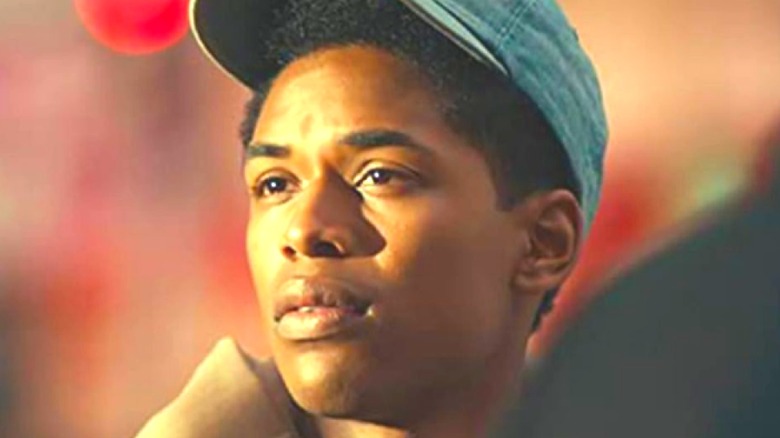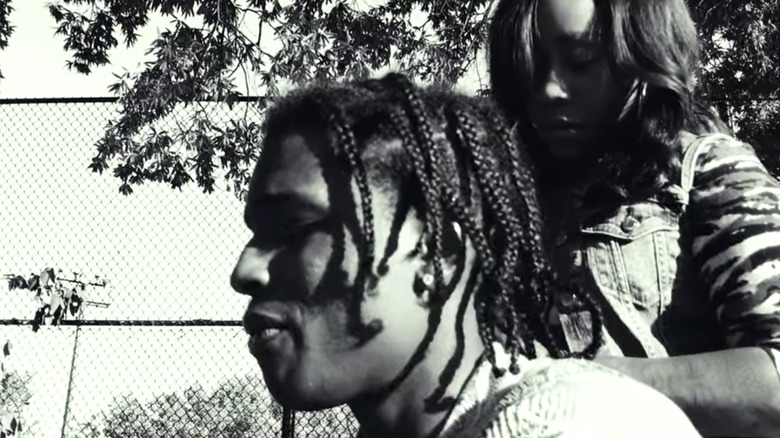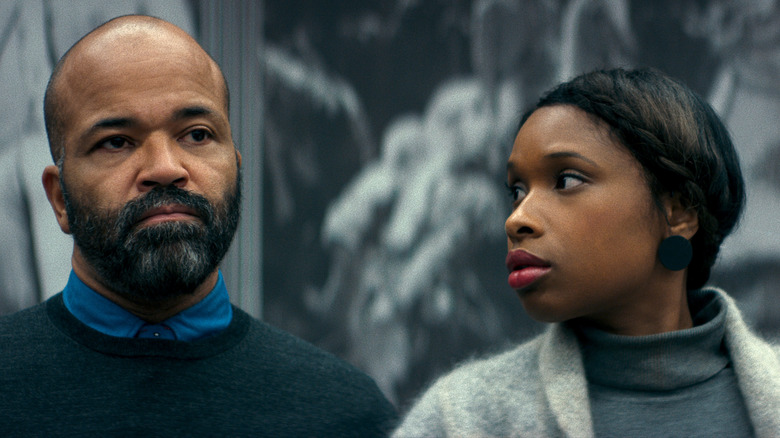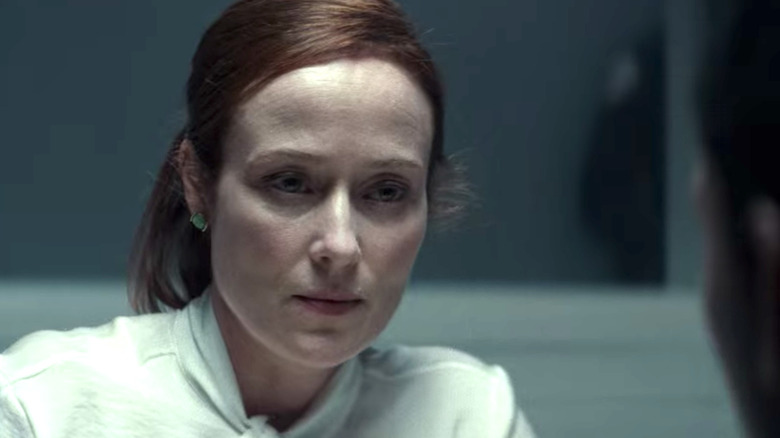How Netflix's Monster Differs From The Book
On May 7, 2021, Netflix brought the indie film "Monster" – based on the award-winning novel of the same name by Walter Dean Myers — to its vast audience on the streaming platform. The film originally came out in early 2018 at Sundance, but it's only now that "Monster" is getting a wide release. The movie has a 67% on Rotten Tomatoes, with many critics praising the performances.
"Monster" stars Kelvin Harrison Jr. as Steve Harmon, a teenage boy who gets arrested as the supposed lookout in a robbery gone wrong, and he must prove his innocence in the trial. The supporting cast includes Jeffrey Wright and Jennifer Hudson as Steve's mother and father, ASAP Rocky as James King, a man on trial for murder as the mastermind behind the robbery. Jennifer Ehle plays Steve's attorney, Maureen O'Brien, while John David Washington and Jharrel Jerome play Bobo and Cruz, respectively, two others implicated in the crime.
While "Monster" takes a lot of the story and other elements directly from the novel it's based on, there are some noticeable changes in the jump from book to screen. Whether it's characterization, filming style, or little details here and there, director Anthony Mandler diverted from the source material in many ways to make "Monster" his own.
The film version uses different storytelling techniques
Myer's book is an innovative story not only because of how it explores morals and structural racism, but also because of how the story is presented to the reader. As the character of Steve is passionate about film, he processes the harrowing experience of the trial and his time in jail through writing a screenplay. Many important moments are presented as scenes in a script, while other parts of the story are diary entries, as Steve also writes directly about his feelings in a notebook. This choice by Myers allows him to experiment with perspectives, and bring the reader further into Steve's emotional journey.
In the transition to screen, the story of Steve's trial is jumping mediums, almost as if his dream is coming true and his screenplay is being produced. While the film sometimes shows Steve picturing his life as a movie through his narration, the trial mostly plays out like it would in a normal courtroom drama. Instead, there are other film elements that make their way into "Monster." In many of Steve's flashbacks, the movie uses Steve's camera as a way to see things from his point of view, and there are many clips of his short films featuring his girlfriend, strangers, and even King, that are incorporated into these key scenes.
Along with that, the themes and multiple point of views featured in the movie "Roshomon" are discussed in a film class before the crime takes place. This conversation is an obvious parallel to the trial's exploration of the many different perspectives of one crime, with people like Bobo, Cruz, random witnesses, and Steve all having a different memory or belief of what happened on that fateful day.
Netflix's Monster changes Steve's key relationships
The film version of "Monster" adds a new character to the story — Steve's girlfriend, Renee Pickford, played by Lovie Simone. Through flashbacks, viewers see how their relationship naturally develops, with Renee being a common subject in Steve's films and pictures. They look like any normal young couple, humanizing Steve and showing how normal his life is before the trial.
In another stark change from book to movie, Steve's relationship with his father is stronger on screen. In the novel, Steve's father loses complete trust in his son, and their relationship starts to crumble after Steve is arrested. Over the course of his trial, it gets more tense, and even after he is ruled innocent and released, Steve's father moves away from the rest of the family, further straining the relationship between father and son. In the Netflix film, Wright's Mr. Harmon is clearly wary in the aftermath of Steve's arrest, even choosing not to tell his wife about a call from Steve in prison one night. But in the end, he believes that Steve is truly innocent, and the whole family stays together through the trial and after Steve's release.
The movie minimizes the role of Steve's lawyer
Other than his family, the main character who plays a big role in Steve's story is his lawyer, O'Brien. While both the book and the movie version portray an honest, subdued woman who intends to win Steve's case whether or not he's really innocent, the movie changes a major moment from the end of the book.
Throughout the original story, Steve's innocence isn't certain, and it's ultimately up to the reader to decide what they believe about Steve's involvement in the robbery and murder. At the end of the book, after the verdict is read, Steve turns to O'Brien to give her a hug, but she rebuffs him. This has a huge effect on his mental health in the months afterwards as he questions why she didn't accept the hug, and if she actually believes he's a "monster" as the prosecutor labels him.
In the film, the relationship between Steve and O'Brien comes to an end with a respectful handshake, and both are clearly happy to have won the case. It's a satisfying scene, but it erases the moral question that her actions pose in the book. The movie includes moments where Steve questions whether or not O'Brien believes his innocence, but she responds that "it doesn't matter what I believe." In the end, the movie seems to have that opinion as well, with O'Brien's moral beliefs pushed to the background and having no major effect on Steve.
Overall, Netflix's "Monster" makes enough changes to present a unique take on Myers' celebrated story, while still staying true to the spirit of the book.



